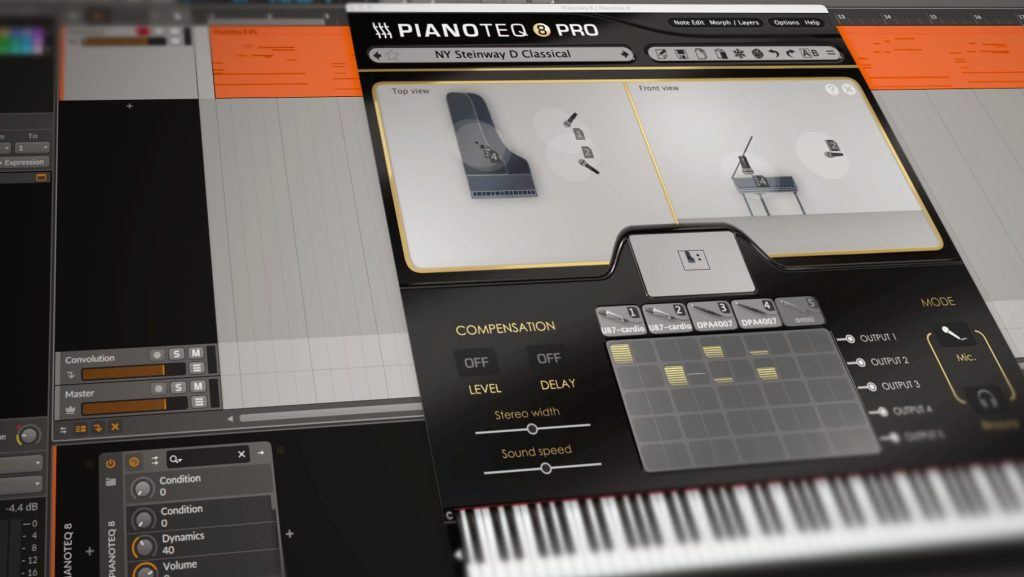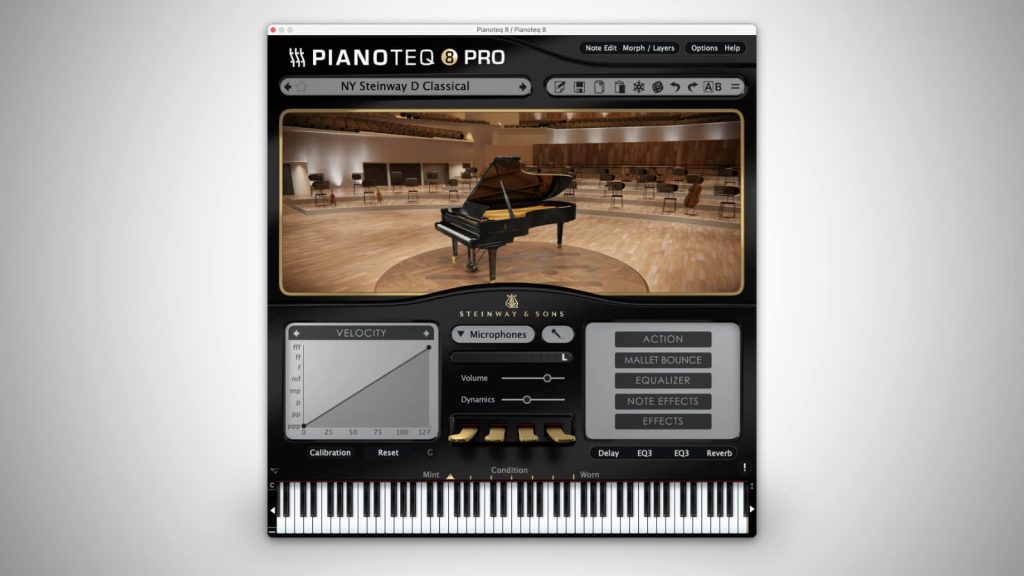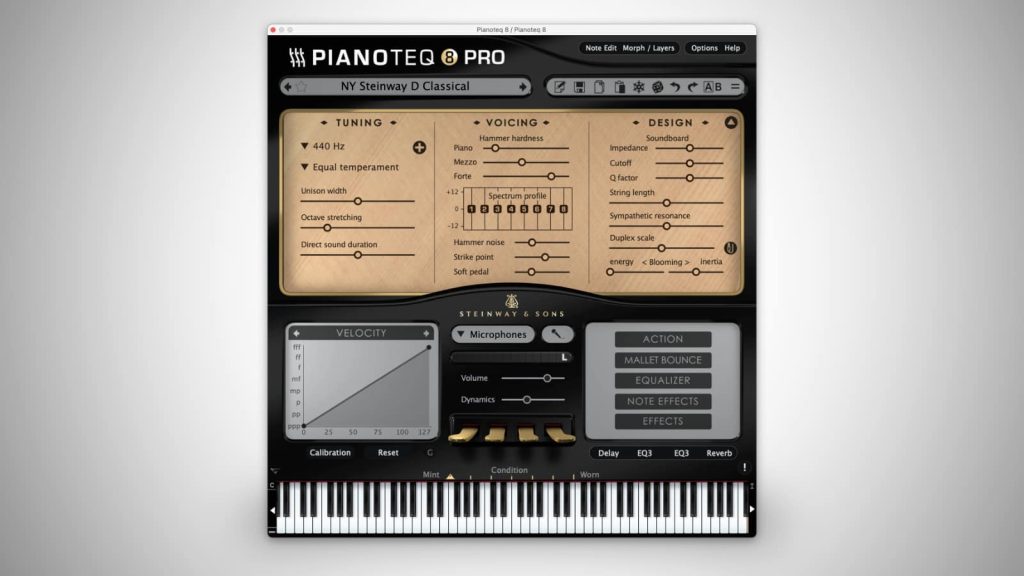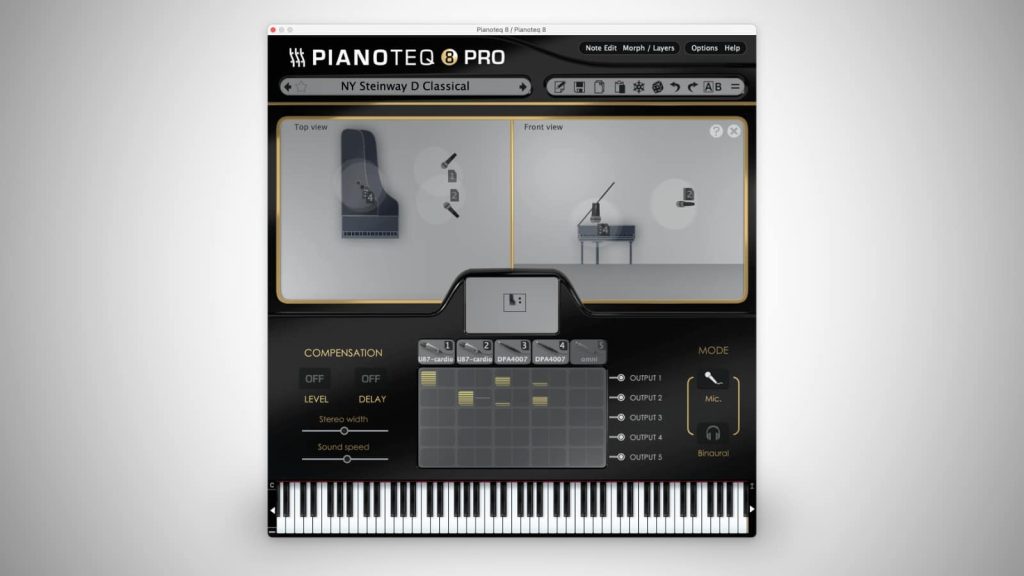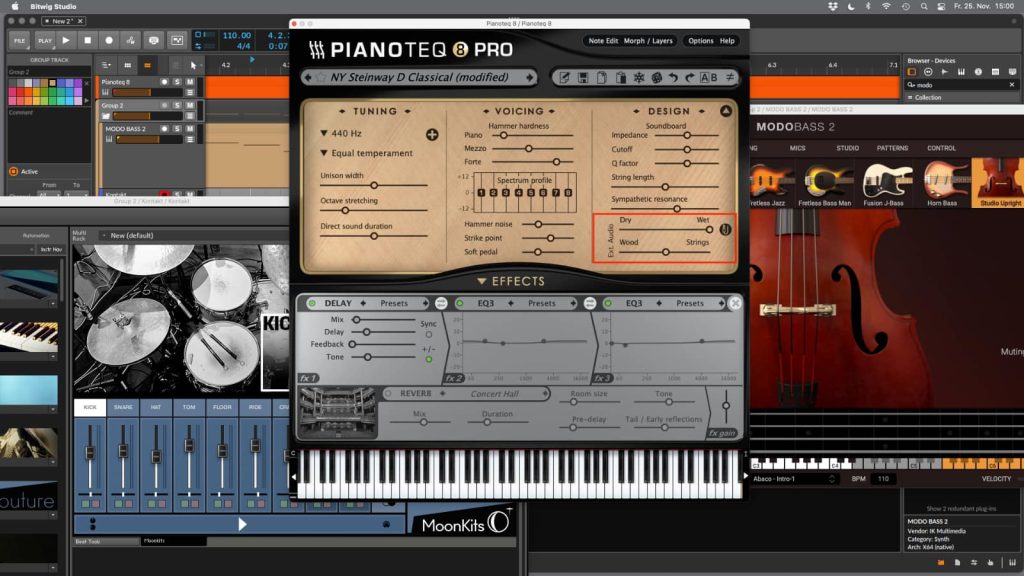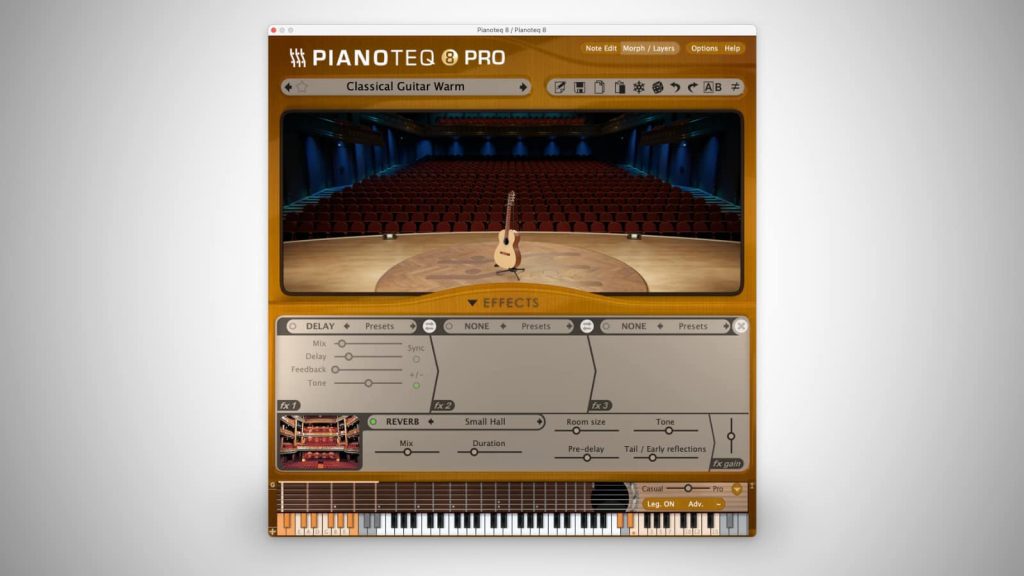Play the Guitar with Modartt Pianoteq 8
As a new instrument, Pianoteq now offers a classical guitar, also known as a nylon guitar. As with pianos, the classical guitar is physically modeled, And likewise, this virtual instrument will surprise you with its authentic sound. Modartt has done a great job here because it’s not just about realistic sound reproduction.
In addition to realism, Modartt has also managed to make the acoustic guitar playable for keyboard players as well. There are different playing modes such as legato, tapping, etc. The instrument responds with string damping, string slippage, and release noise. Via the pedals, you can also play a string harmonic or slightly damp the notes. And there is a new menu for realistic tremolo and vibrato effects.
With a little practice, it all sounds very authentic when played in combination with other sounds or instruments. Of course, a real guitarist is unbeatable, but Pianoteq 8’s Classical Guitar delivers truly outstanding quality for mockups and demo productions. Magnificent!

